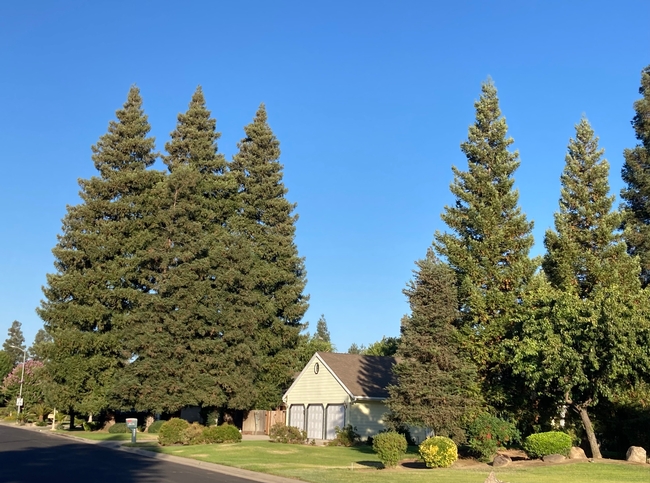The coast redwood is an iconic native California plant. It thrives where marine fog and cool temperatures create a moist, lush forest environment. It's also commonly planted in Fresno County communities, where it has adapted to irrigated landscapes, growing tall and defining city skylines.
Why has the coast-loving conifer been planted so widely in areas where summers are dry and temperatures routinely top 105 degrees?
“There's something magical about redwoods,” said UC Master Gardener Tim Sullivan, who lectured about the trees July 8 at the Woodward Park Library in Fresno. “They're beautiful.”
Sullivan researched redwoods online, visited the UC Davis Arboretum redwood forest, and traveled to Redwood National Park near the Oregon border to gather information for his presentation. All the UC Cooperative Extension advisors, UC professors and national park rangers he interviewed recommended Coast Redwoods not be planted in the Central Valley.
However, local homeowners and landscapers disagree. With the trees so popular in Fresno County, Sullivan developed suggestions for coast redwood care that mimic the trees' natural environment.
In the North Coast and at the arboretum, he said, the forest floor is thickly mulched with redwood needles that have dropped from the trees, along with fallen trees, branches and twigs.
“In Fresno, we tend to rake everything up,” he said. “At least leave the needles, and add grass clippings and water to break them down. The mulch builds soil and will also keep the roots cooler.”
The soil in natural settings are further supported by lush green plants, such as redwood sorrel, trillium, Douglas iris and a variety of ferns. It may take experimentation to determine what shade-loving plants will grow underneath coast redwoods in warm interior valleys. Sullivan suggested one option is gray sedge, Carex divulsa, which he saw growing under trees at the UC Davis Arboretum.

“Redwoods do not like living alone,” Sullivan said. “Their roots stay in the top two- to three-feet of soil and stretch out 50 feet in all directions from the trunk. They do well in irrigated lawns and parks, but next to homes, concrete or artificial turf, they may become unstable.”
In foggy coastal areas, moisture collects on redwood needles and continuously drips down from the canopy to the forest floor.
“The trees have evolved this incredible self-irrigation system that waters the trees and the understory plants,” Sullivan said.
In the Central Valley, the trees will need a lot of water. Provide regular surface irrigation and once-a-month deep application of water, reaching at least two feet below the soil surface, Sullivan said.
For more information on growing coast redwoods in the Central Valley, see these UC Cooperative Extension resources:
Coast Redwoods as Landscape Trees by Michelle LeStrange, UC Cooperative Extension horticulture advisor emeritus, Tulare County
Growing Coast Redwoods by Emma Connery, UC Master Gardener Program Coordinator, Contra Costa County
Coast Redwood Tree Problems by Ed Perry, UC Cooperative Extension horticulture advisor emeritus, Stanislaus County
